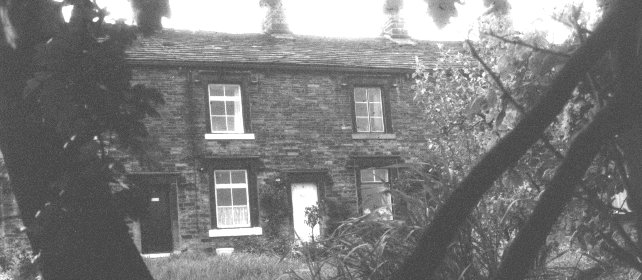
(photo copyright by Peter Underwood)
CHAPTER FOUR
Romiley: A Young Child's Fancy
She lived in the most haunted house in England for five years. At various stages of her life, she lived in completely different worlds. She was hated by some, and revered by others. Her life was at times very public, and at times painfully secret. As a result of her vivid imagination and lust for life, she became the most haunted woman in England. It has taken many researchers a great deal of work and decades of digging to discover her history. Now, for the first time anywhere, her complete story can be told. The mystery still remains, however, about how much of it is true.
Mary Anne Rebecca Emily Shaw was born in Romiley, Chesire England January 26, 1899. The family was extremely poor in earthly things, but very rich in love and imagination. Her father did whatever he could to provide for his family, but never managed to provide the comfort he keenly desired for his wife and two children. William Steele Shaw married Annie Elizabeth Woodyatt in 1896. Within a year, Geoffrey Steele was born, and Mary Anne came along two years later.
Queen Victoria celebrated her Golden Jubilee two years before Mary Anne was born. Victoria's stately reign continued another two years after the baby girl became the light in her father's eyes. Buffalo Bill Cody was touring with his Wild West Show, and the airplane was four years into the future. The end of the century saw the introduction of the radio, the telegraph,and something called the "horseless carriage." Light bulbs and phonographs were in their infancy. The teddy bear had to wait four more years to be born, and John Steinbeck wouldn't be born for three years. Boxing was not recognized as a legal sport in England. The century of steam was giving way to the century of electricity, but the transition took time. Fancy inventions like indoor plumbing and lighting were dreams to most people. They were definitely not within the reach of the Shaw family.

Mary Anne was born in a very small, row house. It was one of several similar cabins alongside Guy Wood Lane in rural Romiley, Stockport. She came into the world in the larger of two upstairs bedrooms at Number Five, Guy Wood Cottages. The downstairs also had two rooms, a living room and a scullery, or kitchen. The houses stood on stone floors, with no plumbing or hot water. Six cottages shared one back yard and one toilet.
When the little girl was two years old, the family moved to Lymm, probably in search of work. William had served as an assistant schoolmaster near Manchester, but for unexplained reasons was not successful.
At Lymm, William Shaw taught arithmetic, bookkeeping, and shorthand to anyone who could afford to pay. Annie brought in the most money by teaching piano. William also played, and became the church organist. Music became a very important in fluence in the Shaw family, and something that stayed with Mary Anne all her life.
The Shaws were like most other families in Victorian England. When not struggling hard for a meager living, they entertained themselves. "Pleasant Sunday Afternoons" consisted of music, readings from famous literature, and perhaps a skit or two. The motion pictures were created in the imagination, with help from the flickering light of a kerosene lantern. It may have been austere, but it was definitely happy.
Either because of her poverty or in spite of it, Mary Anne learned to love the world and everything it in. She learned to become a voracious reader, swallowing knowledge in place of chocolate cake. She eagerly consumed the Latin names for flowers instead of champagne. Languages became an escape to far away worlds. She dreamed of life as a fairy princess, and her father encouraged her. It was their way of escaping the drudgery of Guy Wood Lane. Fanciful stories about aristocratic relatives weaved their way into the fabric of her imagined heritage. She declared to several people that she was the daughter of Count and Sarah Von Kiergraff of Schleswig. She had read the name in a play and she liked the "grand euphonious sound"of it.
Paranormal researcher Trevor Hall became obsessed with
the life of the Shaw's lovely daughter. At one point in his extensive research he commented,
"I was also interested in the fact that [her] father had evidently been a man of at least
rudimentary intellectual attainments. . . She was undoubtedly the possessor of a bold, resourceful
and intelligent personality in which hereditary must have played a small
part."
As she later explained her
imagination, "Oh, I don't know. All my life I've been giving to glamorizing situations and
propagandering.. . as a child I used to make up stories that I was a princess, all kinds of silly
things."(2) Hall discovered that, "all her
life she loved to tell people she came from a better family than she did. She loved to boast to
impress people. . .she did not see anything wrong in telling such stories as people became
impressed with her and she had a glorious time playing the
part."
The young girl had a very good
memory and "could remember all the silly stories I had ever heard and bring them out at the
wrong time."
At various times, the claims have been made and denied that Marianne was psychic, or that she came from a psychic family. Researchers in 1955 were unable to confirm such a claim when interviewing neighbors near Stockport where she lived as a child. A similar investigation was conducted throughout Suffolk where she lived after WW II. No references to her being psychic could be discovered. Nevertheless, she privately told Iris Owen and Paulene Mitchell in 1979 that as a child she could "find lost things." She said that as a child she saw "Joan of Arc and other people who were supposed to be dead."
Her ability to create royal images and pictures of life in a better world helped her soar beyond whatever real life had to throw at her. It also came back to haunt her, as other people who were not so graciously caught up in her fancies called her not imaginative, but a liar.
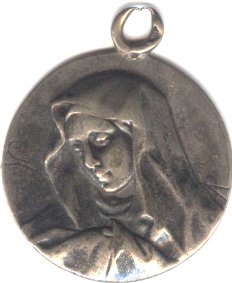 One of the people who
was caught up in her beauty and her spirit for life was Reverend Lionel Algernon Foyster. Born in
1878 to a long line of clerics, Foyster became a close friend of the Shaw family. When Mary Anne
was six years old, he gave her a book called The World of Ice, the first book she
remembered reading. Foyster was curate at Oughtrington, just a mile from Lymm. The reverend
was a frequent visitor, and wrote often when both he and the Shaws moved from place to place.
One of the people who
was caught up in her beauty and her spirit for life was Reverend Lionel Algernon Foyster. Born in
1878 to a long line of clerics, Foyster became a close friend of the Shaw family. When Mary Anne
was six years old, he gave her a book called The World of Ice, the first book she
remembered reading. Foyster was curate at Oughtrington, just a mile from Lymm. The reverend
was a frequent visitor, and wrote often when both he and the Shaws moved from place to place.
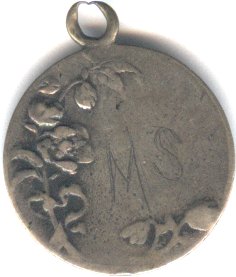 When the pretty little
girl was seven years old, he baptized her into the Anglican Church. He was 21 years her senior,
but he was also captivated by her dancing brown eyes, wavy black hair, and constant smile.
When the pretty little
girl was seven years old, he baptized her into the Anglican Church. He was 21 years her senior,
but he was also captivated by her dancing brown eyes, wavy black hair, and constant smile.
A friend of the author who has done some research visited Heptonstall and dicovered;
"It is in the back of nowhere. Up on the Moors, very isolated. The time that Lionel Foyster would have been Curate there, the population would have been about four thousand. He must have had some good connections to become Curate there. Heptonstall is no ordinary little backwater. It is an ancient Pennine village. It thrived from hand loom weaving. Hence there was a great deal of wealth in the area. The old church 1256-1854, still stands in ruins. In the aftermath of a storm which destroyed the old church, it was decided to open a subscription list in 1854. Local stone was used.
"The foundation stone was laid in 1850 and the church was completed by 1854 and dedicated to St Thomas the Apostle by the Bishop of Ripon. The church cost £6000 to build. It is of Victorian Gothic Style. In the graveyard there are many stones. I did find one with the name Shaw. However, the name Greenwood was the most common. Then I discovered that the Old grammar school was endowed in 1642 by a legacy of the Rev. Charles Greenwood, Rector of Thornhill and Lord of the Manor of Heptonstall. My theory is that either Lionel visited one of the churches where the Shaw's worshiped or they visited relations in Heptonstall.
"It was as if we had travelled back in time. The roads were narrow, certainly not made for the modern car and never ending. On arrival at the village, we experienced the worst part of the journey, we had to travel through very narrow streets.The surface was comprised of cobble stones that shook one body so badly that ones teeth rattled."
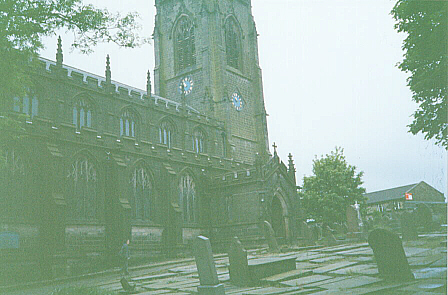
|
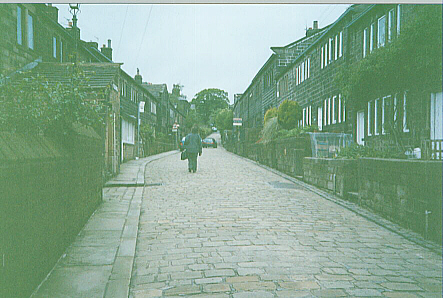
|
Although the family was happy, it was still very poor. For reasons that remain unclear, the Shaws packed up and moved to Ireland. It can only be assumed they were looking for a better life and moved away from England with the promise of a better job. One would think the eight year old Mary Anne would look on such a move as a great adventure. She did not.
1. Hall, Trevor. Marianne Foyster of Borley Rectory.Unpublished, 1957. Vol. 1, p. 33.